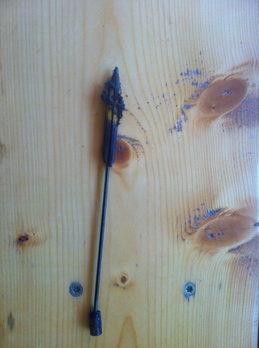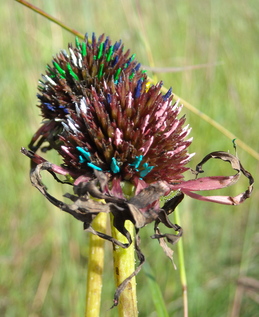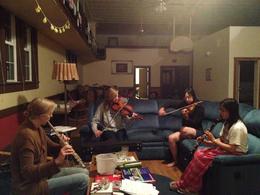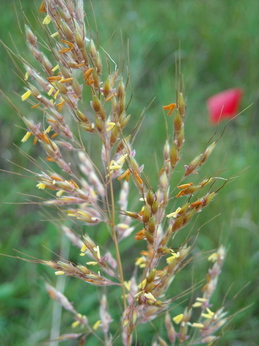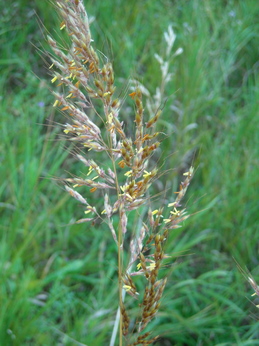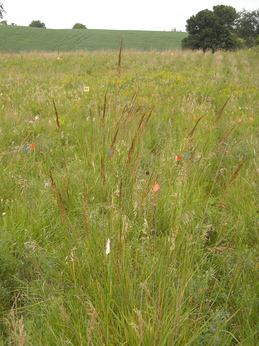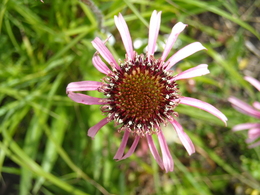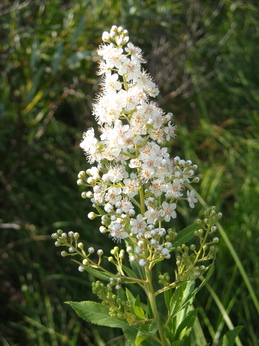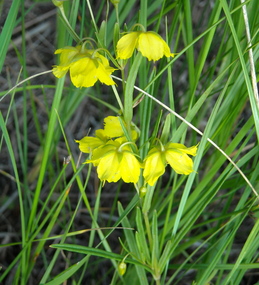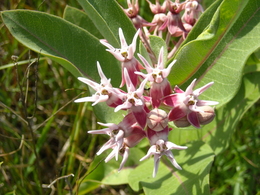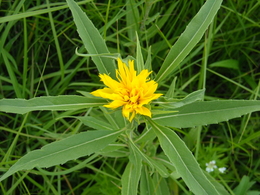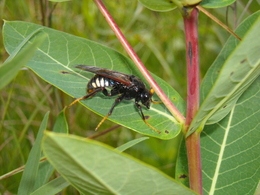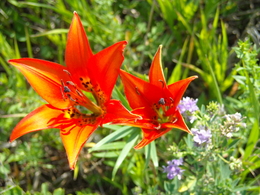This January Stuart and Gretel kindly hosted me in Chicago and gave me the opportunity to spend a few weeks working in the Echinacea Project lab continuing my research from the summer. Here is my final paper with some interesting results.
|
||||
|
Today dawned slightly warmer than the past few days, and we spent a beautiful morning doing demography out at Staffanson. The west side of Staffanson was burned late this spring setting things back a little later than the east side and the remnants, and the big blue stem and indian grass are now in full bloom and about five feet tall. Dichanthelium is flowering, and I even saw a phlox, which I haven’t seen for weeks at any other site. The echinacea there have all finished flowering, but many still boast pink ray florets. The recent burn also removed all of the duff that we often have to dig through to find tags and check for nearby echinacea, and left everything greener and softer. One other result of the burn was this pencil that I found next to the last plant I demo’d. It looks like someone forgot to remove it from seedling searches…you can see the part that was sticking in the ground survived the flames. It was Andrew’s last day today, he and Jill left after lunch to present their posters at the Chicago Botanical Gardens, and only Jill will return. To send him off we had rootbeer floats after a lunch which was also enhanced with bowls of delicious cucumbers, cantaloupe and grapes from the Wagenius gardens. This afternoon we all had some time to work on our independent projects. Although we presented posters last Thursday I think all of us have plenty more that we could do. In some ways I feel like I have more work to do than when I started this summer, although much of it is still just ideas of new projects or parts of my project that I could build on if had more time. I did take the opportunity to get in a little more fieldwork, and Gretel drove out to Hegg Lake with me to help gather more data. We GPSed all of the plants for my crossing experiment again (the first time around the files got a little mixed up) as well as all flowering plants in my population of E. angustifolia. We also began developing a protocol to measure leaf pubescence for my characteristics study. From each plant we cut off the end of a leaf to be pressed and viewed under a scope, and then I painted a small patch of “new skin” (liquid band-aid) on the top of the leaf, waited for it to dry, peeled it off and mounted it on a slide also to look at under a microscope. While we were out there I completely lost track of time, and when Kelly called to see if we were done yet I was shocked to realize that it was already 5:30! Saturday was a quiet day for those of us living at the town hall. Katherine biked in to the Hjelm house to work on her aphid addition and exclusion project and I spent a few hours at Hegg Lake repainting the last of the bracts from my crosses and harvesting the first pallida head. Kelly and Andrew were both away for the day, and everyone else took a needed break and spent the day relaxing. Some of my painted bracts
playing music, photo courtesy of Jill
Here’s all of my data from my crossing experiment and the R script that I used to analyze it! I’ll put up a metadata sheet soon. Here’s the poster I will be presenting at the University of Minnesota on Thursday. Oops!! I had an entry written for Tuesday, just waiting for the obligatory photograph, but somehow my title was published and nothing else was saved. So here is the delayed version of Tuesday’s events, maybe the extra hindsight will shed a different light on our activities… Working out in the common garden recently the views have been changing. Goldenrod is in full bloom along the edges and Big Blue Stem and Indian Grass have sent up tall stems (culms) and begun flowering. Some of the culms reach up above my head and I makes me wonder what it would have been like to walk through a prairie full of them. Tuesday morning marked the end of measuring in the common garden!!!! It was slightly anticlimactic with only one and a half rows left to finish but it is still rewarding to be finished. It was a rainy morning so we didn’t get out to the common garden until about 10:30, but we had time to pull all of the thistles between measuring and lunch. Now there will be one less prickly plant to avoid when we return to recheck missing plants and contradictory records in the next few weeks. While the rest of us were working inside or in the common garden Katherine and Jill spent a long morning at work in the remnants performing their aphid and any survey. They made significant progress, leaving only two small sites to finish on wednesday, and found Kelly’s sunglasses that she had lost at Staffanson. We had been planning to spend the afternoon measuring in the common garden, but since we finished earlier than expected we had the rest of the day to work on individual projects. Many of us took the opportunity to prepare abstracts for submission to the University of Minnesota for the poster session we will be presenting at on August 9th. It turns out that abstracts become more challenging to write when you are still floundering through R endeavoring to analyse your results, but as Stuart reminded us, all (or most) of the other presenters are likely to be facing the same challenges. I haven’t been very good about taking photos recently, but while I’m on the topic of individual projects here are two photos that relate to my work. The first one is E. angustifolia and the second is E. pallida. You can see how they have a slightly different appearance. Friday morning started out with a quick round of phenology in the common garden. Split between four or five of us it only took about 20 minutes each and it seems like flowering is just about done! From what every one who has been here in previous years, this year appears to be earlier than usual. We had an early lunch to allow for a longer stretch of work in the afternoon and managed to finish measuring at Jennifer’s plot at Hegg Lake a few minutes after 5pm. We took a short and very welcome break halfway through for watermelon that Jennifer brought. And managed not to loose any surveying pins, despite me forgetting to pick up the pile I made and Maria’s attempts to hide one in her flag bag. This morning most of us got a taste of Maria’s regular schedule when we arrived at the Hjelm house by 6am for a special trip. We drove three hours Northwest to the Pembina Trail Preserve to help Gretel count western prairie fringed orchids for her work with the Nature Conservancy. Unfortunately it seems to be a bad year for orchids and we only managed to find one that wasn’t even in either of the grids we were searching (In previous years there have been as many as 2,000 in the combined grids). As we were searching we met another group that was surveying the entire preserve, and they reported that they had only found 23 flowering orchids, so I guess we were lucky to see any at all! Although we were disappointed by the lack of orchids, we did see many new plant species and wildlife that we haven’t seen around K-town. Here are a few of them: Spiraea alba While we were all gone Katherine and Maria stayed behind to work on their projects. After three very hot days, the humidity dropped slightly today, to the point where we weren’t all sweating just standing outside, and there was even a nice breeze off and on. |
||||
|
© 2025 The Echinacea Project - All Rights Reserved - Log in Powered by WordPress & Atahualpa |
||||

